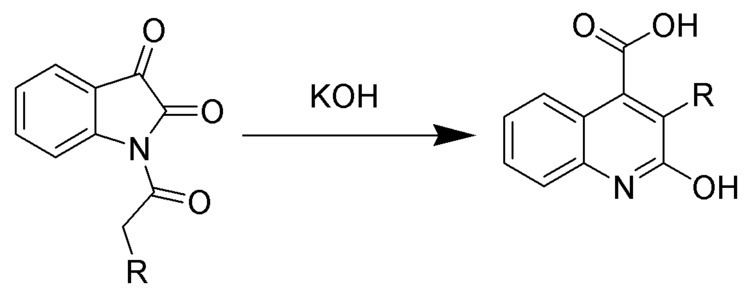Named after W. Pfitzinger Typical solvents protic | Reaction type ring-condensation | |
 | ||
The Pfitzinger reaction (also known as the Pfitzinger-Borsche reaction) is the chemical reaction of isatin with base and a carbonyl compound to yield substituted quinoline-4-carboxylic acids.
Contents
Several reviews have been published.
Reaction mechanism
The reaction of isatin with a base such as potassium hydroxide hydrolyses the amide bond to give the keto-acid 2. This intermediate can be isolated, but is typically not. A ketone (or aldehyde) will react with the aniline to give the imine (3) and the enamine (4). The enamine will cyclize and dehydrate to give the desired quiniline (5).
Halberkann variant
Reaction of N-acyl isatins with base gives 2-hydroxy-quinoline-4-carboxylic acids.
References
Pfitzinger reaction Wikipedia(Text) CC BY-SA
